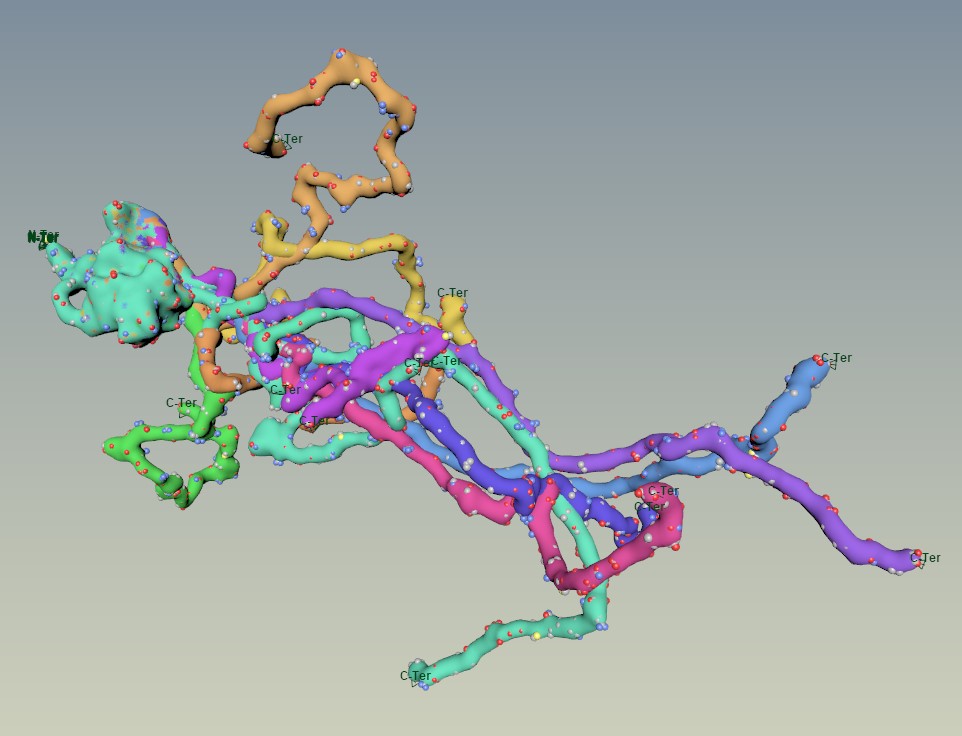April's Molecule of the Month at the Protein Data Bank features proteins that bind to biominerals. This is osteocalcin binding to calcium ions, a major component of the calcium-phosphate lattice that makes up hydroxyapatite. Hydroxyapatite is essentially "bone mineral", which helps gives bones strength and rigidity.
The glowing spheres are the calcium ions that osteocalcin is currently binding.
This illustration was the first one where I brought molecular data directly into Houdini, the new 3D application that I have been learning over the past few months. Houdini requires very different workflows from other 3D applications, so learning how to manipulate data for this illustration was interesting and insightful, and I believe processes like this will allow me to create some pretty interesting content in the future.
The green balls here are the important calcium ions. It didn’t take too many nodes to generate this, which is nice.
Houdini can natively read PDB data files like the one I downloaded for osteocalcin, however beyond some helpful data organization, it doesn't have any tools for displaying different molecular representations, so everything from space-filling representations (like the one above) to surface meshes to backbones must be created from scratch. Fortunately Houdini is a great tool for building tools, so I'll be spending some time developing an internal toolkit to show molecules in different visual styles.
A single hydroxyapatite unit: Ca in green, PO4 in yellow/red, and OH in red/white
The crystal data for the bone mineral was in a different format (CIF), so I used UCSF Chimera to export a new PDB file and get the measurements that allowed me to expand a single atomic "cell" to the full crystal field of repeated units.
Thanks for reading,
Stuart












